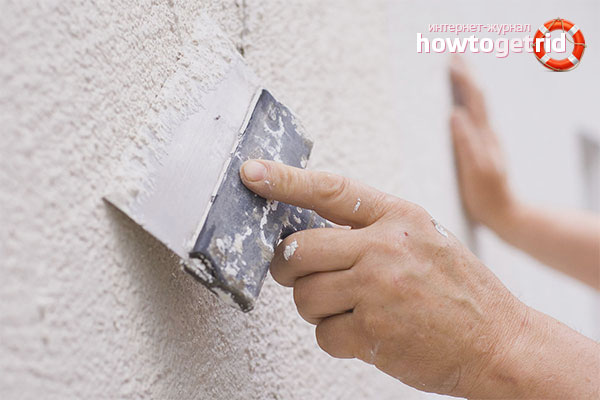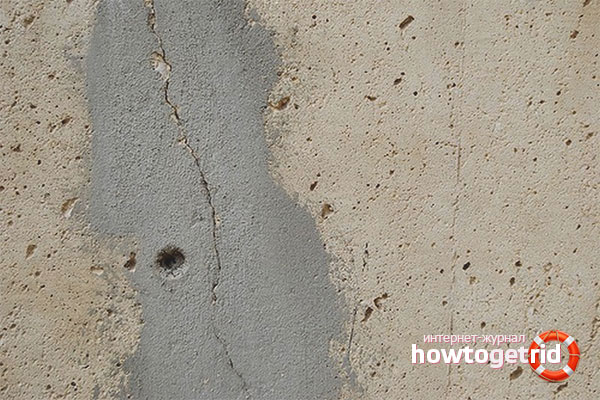The content of the article
Everyone will agree that the cracked walls do not look quite aesthetically pleasing and correct. This problem is very relevant for private and apartment buildings. Because of the cracks, the wallpaper peel off, the paint bursts and crumbles, the decoration of the rooms suffers, and other troubles happen, which it is simply necessary to get rid of.
This does not occur completely due to negligent builders, various natural phenomena play an important role: earthquakes of different intensities, land subsidence, redistribution of groundwater, etc.
It is necessary to realize that it is often impossible to completely protect yourself from such a nuisance, so the problem that has arisen will have to be (extremely desirable!) Eliminated at its first manifestation. It is logical that eliminating a crack in its “embryonic” state is incommensurably easier and cheaper than in the later stages in the presence of terrifying manifestations.
Why cracks form and “grow” on the walls
The appearance of any cracking, especially affecting the internal structure of structural elements, greatly worsens the appearance of the structure, and can also become a significant functional nuisance.
Let us consider in more detail the most common causes of the formation of crack defects in the walls of houses.
Uneven settlement of some individual fragments of the wall. Probably, any superstructures were mounted above the wall, which created a load dissonance or wall soil gave an uneven draft for other reasons. But the result of such a disadvantage is expressed in the “distortion” of the structure and the appearance of stress lines along which the building material ruptures with the formation of cracks of various configurations.
If the load points are rather strongly displaced, then there is a potential danger of the destruction of the wall section with the subsequent collapse of the ceilings.
In such a situation, the cracks can be closed only after the complete elimination of the root causes that led to their formation. The structures themselves also need to be further strengthened.
External natural influencesfor example, sun, frost, wind, transient temperature changes, etc. Here, cracks often appear precisely in vulnerable areas of frequent exposure:
- joints between internal elements and external walls of high-rise floors;
- flights of stairs;
- places and levels of changing the initial construction technology to an alternative methodology.
When similar nuances and specifics of the behavior of building materials are taken into account when creating a house project, problems with cracks, as a rule, do not appear.
But, if cracking has occurred, defects can be eliminated by reinforcing “vulnerabilities” by installing steel clips or by local introduction of a special cement composition.
Concrete drying - also a very real reason for the occurrence of cracks. Such slit-like defects mainly occur on the internal plaster or on the external facades, and more serious through - on reinforced concrete elements and structures.
You can fix this problem:
- jointing and high-quality grout;
- the introduction of aggregate - cement mortar;
- kapron (polyamide) mesh.
Cracks in the wall can occur when the real strength of the structure and the loads acting on it do not match.
When during construction the structure receives an incorrect load distribution, soon cracks appear on the walls and pillars, which can "merge" into a large vertical formation.With these phenomena, it is sufficient to correctly strengthen the structure that began to collapse. Usually, walls and columns are subjected to reinforcing actions, and the walls are closed with special double-sided “shirts”, which must be subsequently plastered.
Repair cracking walls
Various tactics and technological developments allow to repair wall cracks in many effective ways. For example, to paste wallpaper, place a poster or hang a painting, but such events are a temporary disguise of the existing problem, but not its elimination.
Since cracks are formed due to many reasons, it becomes necessary to assess the situation and decide what exactly to do in a particular case and how to independently repair a cracked wall defect.
Brick walls
Important! Repair repair of cracks can begin only after the termination of its "growth" in the brick wall. You can control the increase in defects using beacon paper stickers. If they do not burst, say, after a couple of weeks, then the cracking has stopped!
A small crack (up to 5.0 mm) can be filled with cement mortar. First you need to clean the crevice space from dust, debris, debris and soak its walls from the inside with water. To improve the adhesion strength of the mortar mass with bricks, it is recommended to beat the edges of the slit with a hammer or a breaker before closing up.
Middle cracks (size 5.0-10.1 mm) are repaired in the same way, but fine sand must be added to the solution.
Any cracks wider than 10.1 mm are considered critical and potentially dangerous. They need immediate closure, for which the following methods have been successfully applied.
- The wall section damaged by cracking is taken apart and replaced with a completely new masonry. Strong, “fresh” bricks are laid according to the technological principle of “brick lock” and in the process, metal gaskets (reinforcement or elongated plates) that completely cover the crevice formation should be made. The beginning of the dismantling of the masonry must be carefully begun with the overlying brick row.
- You can close the gap with cement mortar. Here, depending on the propagation length of the gap defect, T-shaped metal anchors are driven into the crack. They are attached to the wall with dowels.
- You can fill the cracks in the walls of brick with expanding mounting foam. The gap prepared for repair must be filled with polyurethane foam, and after drying and solidification of the substance, undercut the material with a depression of about 2.25 cm. Such a gap must be filled with cementitious mortar and leveled for subsequent finishing.
- To prevent a cracked brick wall from losing its strength, experts recommend that it be strengthened from the inside of the house. This implies not only termination, but also an overlay on the crack defect of the lock, which is a metal profile. The castle is fixed to the wall by means of anchors in the transverse direction, blocking the crack itself across. Such a technique will not allow the split to spread further.
- It is possible to use steel brackets with long "legs" that enter the brick-cement massif to a depth of more than half the wall thickness value. For staples, preliminary drilling of special channels is required.
- Cracks in the foundation may contribute to cracking. The crack will stop its progression if the foundation is reinforced with an additional concrete belt. To implement this decision, you need to dig a deep trench around the perimeter of the building so that it exceeds the level of the bottom of the foundation. In this trench, an additional, strengthening belt is created.
Concrete walls
For high-quality repair work, you will need:
- large (blade over 400.0 mm) and small (up to 30.0 mm) spatula;
- stiff brush;
- wide reinforced tape or durable gauze;
- sealant (for joints) and any model of gun for it;
- sponge.
First, you need to thoroughly clean the cracked area and rinse thoroughly with the prepared area with a damp sponge. Then, the gap space is filled with sealant.
Advice! To smooth the input composition at the wall surface, you need to smooth the applied material with your finger. The finger must be constantly moistened in a highly concentrated solution of absolutely any detergent!
In addition to the method described above, cracks in a wall made of concrete can be eliminated using ordinary PVA glue and cement mortar. First of all, the surface of the defect is cleaned, and then PVA glue is abundantly applied. The crack processed by this method is densely filled with cement mortar, followed by smoothing the material with a spatula to match the level of the wall surface.
Any other actions on the concrete surface (finish, priming, etc.) can be performed after setting and drying the mortar.
Video: how to repair a crack in the wall












Submit